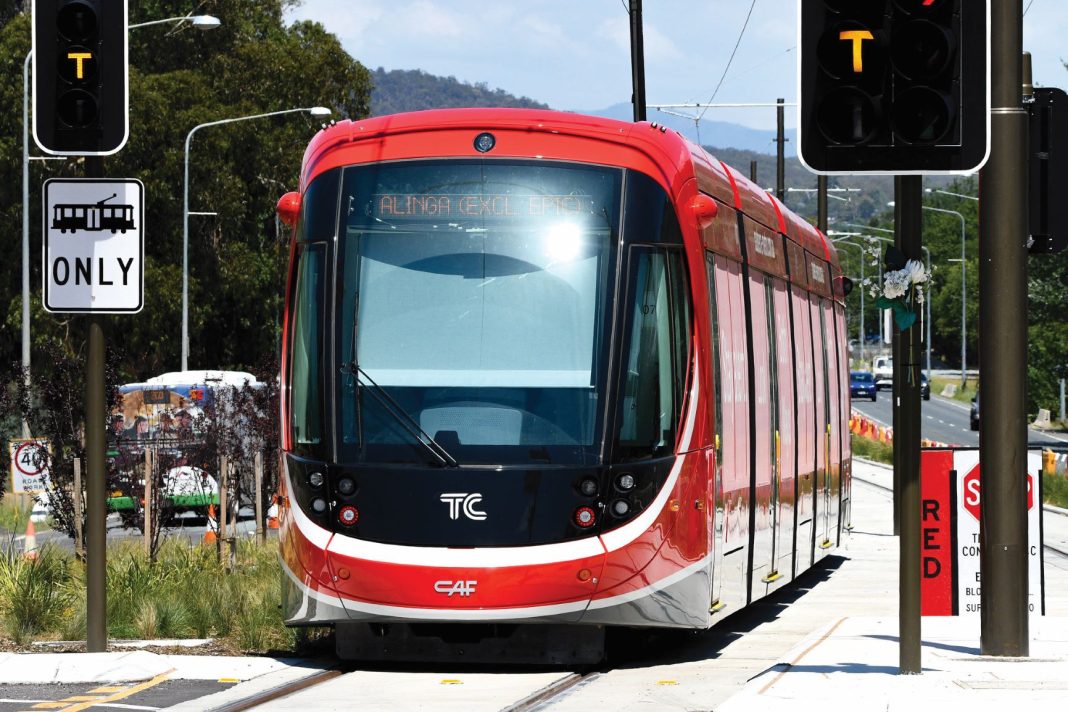The ACT Government says the transport update to the ACT Infrastructure Plan, released today, “lays the foundation for a modern and growing city” – Canberra is expected to reach half a million people by 2027 – but Labor’s political rivals argue that essential improvements could take years.
“The release of the ACT Infrastructure Plan Update: Transport highlights a range of key road and active travel projects that will provide Canberrans with even more options for getting from A to B as our city grows,” Tara Cheyne, minister for city services, said.
The transport update covers roads, bridges, public transport, and active travel.
Transport minister Chris Steel said: “The ACT Government envisions a transport system that supports a liveable, sustainable and connected city with flexible and reliable journey options. We understand Canberrans need a range of transport options to suit their needs, whether travelling by public transport, car, bike or on foot – or a combination of these.”
The jewel in Labor’s crown is the much-touted Stage 2 of the light rail network, from Civic to Woden. The update states that Stage 2A (Civic to Commonwealth Park) will take five years to complete; Stage 2B (Commonwealth Park via the National Triangle to Woden) will take 10 years; and future stages will take more than 20 years.
According to the update, each of those stages will cost more than $500 million. Labor, however, revealed last year that Stage 2A would cost at least $577 million, while the Canberra Liberals estimate it will cost $1.46 billion, or almost $1 million per metre, and Stage 2B more than $4 billion.
The Garden City Cycleway (connecting the inner north to Civic) will take three years; the ACT and federal governments have each funded $5 million. The Kingston Cycleway (between Kings Avenue Bridge and the Canberra Railway Station) will take 10 years; the cost is unclear, but less than $50 million.
The Molonglo River Bridge will connect the Molonglo Valley to Belconnen and Civic; once finished, it will be the longest weathering steel bridge in Australia. It will, Ms Cheyne said, “improve traffic safety, and provide cyclists and pedestrians with off-road travel options”; and its construction will support more than 500 jobs.
According to the update, it will cost between $100 and $250 million ($178 million was budgeted in 2020), and take five years to construct.
The 2019 Infrastructure Plan stated that the bridge would be completed in 2024. In 2021, Mr Steel said the bridge would open one year later, in 2025.
Ms Cheyne claims the bridge is “a great example of how the ACT Government is creating an even better-connected city”.
“Significant projects, like the expansion of our light rail network, will ensure our city has the infrastructure and services Canberrans rely on, now and for years to come,” Mr Steel said.
Canberra Liberals transport spokesman Mark Parton MLA said: “Canberrans can’t wait decades for improvements to our public transport network. The Canberra Liberals are committed to implementing our people-focused public transport network following the election in October that will get Canberrans where they want to go when they want to get there.”
The Strong Independents are critical of the government infrastructure plan. Ann Bray AM is concerned that many projects had vague or inflated costs, and suggested that an Independent Infrastructure Commissioner (one of their proposals) should assess the validity and effectiveness of these projects.
“Whilst there are a lot of things in here that are probably essential, many items are over $50 million, some with very fluffy numbers – i.e., $500 million+, so we would like to see our Independent Infrastructure Commissioner look at them,” Ms Bray said. “He/she would assess the robustness of the options provided in the business case, and also whether the suggested options properly address the root cause of the problem/issue This would be a very transparent process with evaluations of the projects made public once assessed.”
“After 23 years, has the government just discovered some things that need to happen?” Peter Strong AM asked. “Most of this plan has either been announced before – and much of it not actioned – or will not be actioned.
“I once owned Smith’s Alternative Bookshop, and this report would definitely have been included in Fiction – not science fiction, where authors do research on the latest science, but in the dystopian section, as this plan predicts a forlorn, bleak, and wretched financial future.
“This plan will not happen as it is written. We need a strong cross-bench to make sure future plans are professional, transparent, honest, independently costed, and make economic sense.”



